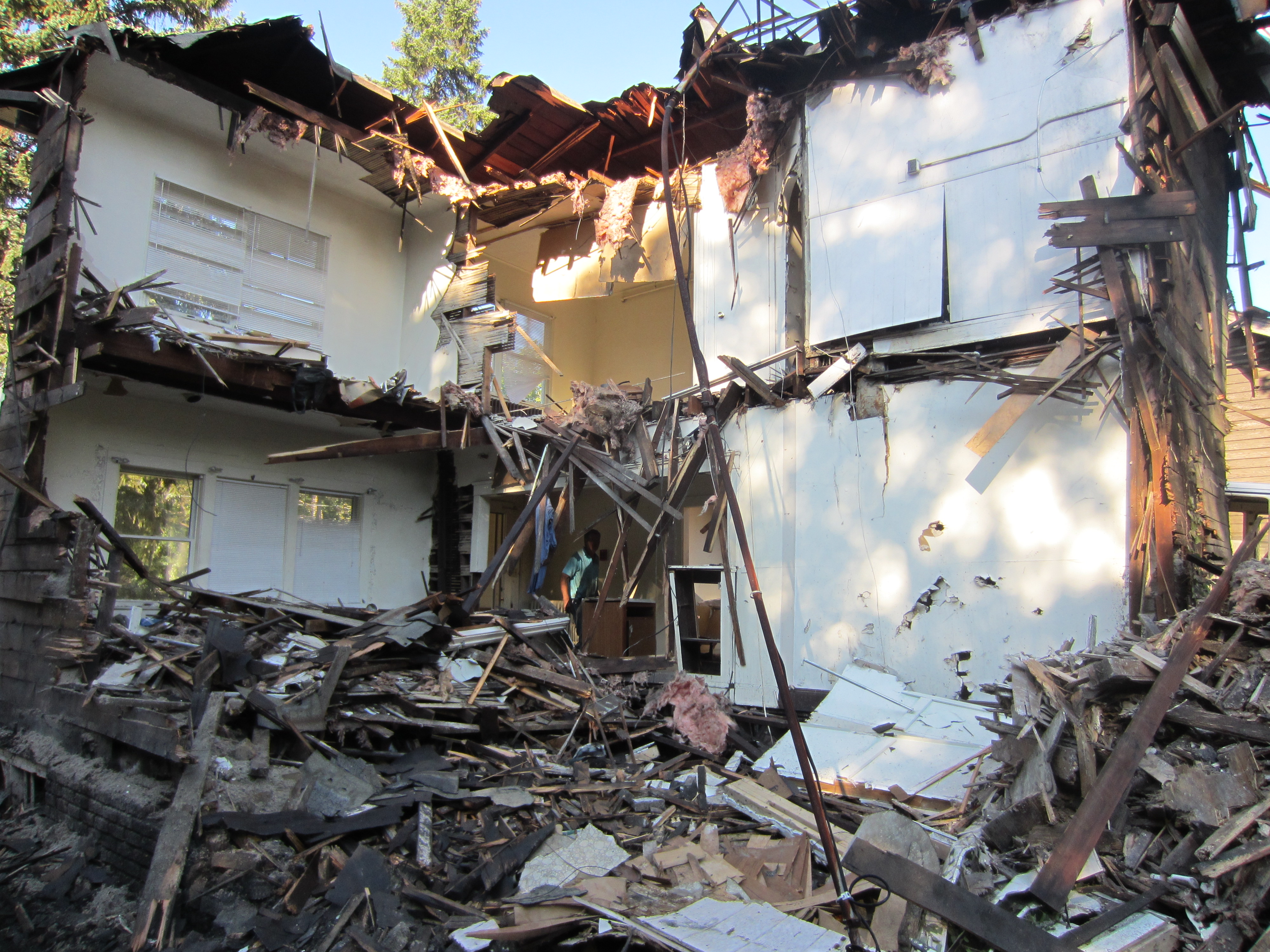In this photograph we see a half-smashed house, its exposed rooms framed by shards of plank and drywall. Beyond it is blue sky and inside is a man in a sky-blue shirt, walking through a hallway as if the house was still intact, still a place to casually move around. The photograph catches the building in a moment of decomposition, when it has ceased being a house in the conventional sense (no longer properly habitable, fixable, sell-able) but remains, in some form, nonetheless.
The house is in Youngstown Ohio, where it is part of a larger landscape of variously dis-inhabited, decomposed buildings. Some are half-smashed like this one, others slowly gutted, burned-out or rottenly unfurling. This opened architecture is the fallout of a series of recent chapters in American capitalism: corporate withdrawal from the project of city-building, intensifying general impoverishment, widespread predatory lending and the rise of a market in post-occupancy real estate. In Youngstown, encounters with these unfurling houses are part of daily life. It is a landscape at once ordinary and strange for residents, pervasive but continually surprising, a kind of unhomely everyday.
Among other things, these houses have become spaces of work--the work of gleaning, stripping and demolition. The man in the photograph is in the midst of demolishing the house. He works alone, in plain clothes, taking the structure down chunk by chunk with a backhoe. It takes him about a week to finish the job. He is an expert in its decomposition. He knows where to hit, how it will fall and the best way to sort the remains. He does not treat the house as a place to live, but he is still 'at home' in it, knowing how to move with the structure as he pulls it down.
For the social scientist, too, there is a relation between expertise and decomposition, in which coming to know something is often a process of pulling away layers or cutting in at an angle. The smashed house looks a lot like a diagram of a house one might find in an ethnography. Like diagramming, demolition allows us to see the house in a way that would have been impossible when it was habitable. Half-destroyed, we can simultaneously see both interior and exterior, both first and second floor layout, and all the normally hidden structural layers-- beams, planking, insulation, wiring and so on. In the moment of its dissolution, the house reveals itself. And yet it also turns fantastic, surreal.

Commentary on Rachel Tanur's Works: Florida Beach
Commentary on Rachel Tanur's Works: Florida Beach